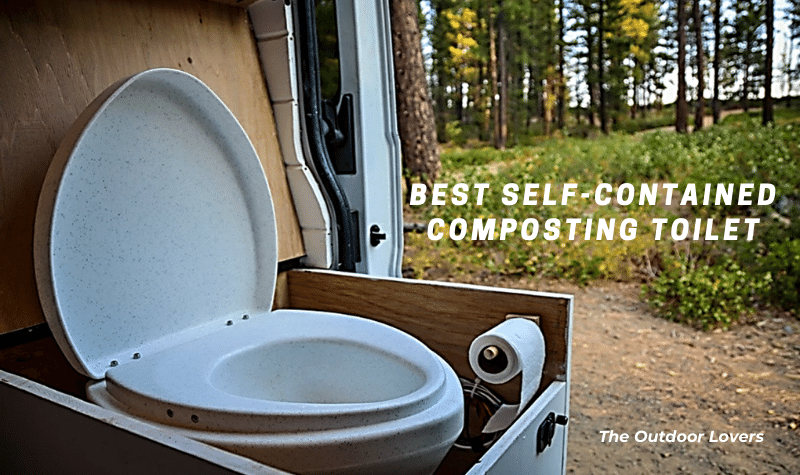The best self-contained composting toilet is a revolutionary product for those who care about the environment! It is an excellent alternative to traditional toilets, as it does not require any water, nor does it produce any harmful chemicals. A self-contained composting toilet is an excellent tool for those who want to reduce their environmental impact.
It uses natural processes to break down waste and turn it into nutrient-rich compost. This compost can then fertilize the soil and promote healthy plant growth. Moreover, the self-contained composting toilet is also easy to install and maintain, meaning anyone can quickly and easily set it up and use it without needing special tools or expertise. With its eco-friendly design and convenient setup.
What are the benefits of the Best Self-contained Composting toilet?
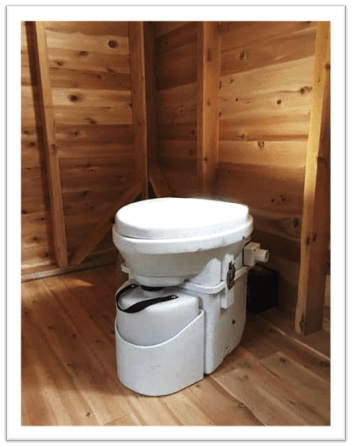
1. Used Anywhere:
First, self-contained composting toilets require no water, making them ideal for areas where water is scarce. They also require no electricity to be used anywhere, even in remote locations.
2. No septic system required:
Furthermore, they don’t need to be connected to a septic system, so they are much easier to install and maintain than traditional toilets.
3. Efficient:
Self-contained composting toilets are much more efficient at treating human waste. Unlike traditional flush toilets, which simply flush the waste away, composting toilets use bacteria and microorganisms to break down the waste into harmless elements. This process also produces compost, which can be used as a soil amendment in the garden.
4. Odorless and Pleasing:
Self-contained composting toilets are odorless and aesthetically pleasing. Unlike traditional flush toilets, which can create a strong smell, composting toilets don’t produce any odors. Furthermore, they come in various designs and sizes to fit any décor.
5. Affordability:
Self-contained composting toilets are highly affordable. They are much less expensive than traditional toilets and require very little maintenance. In addition, they can help reduce water bills since no water is used in the toilet itself.
What are the different types of self-contained toilets?
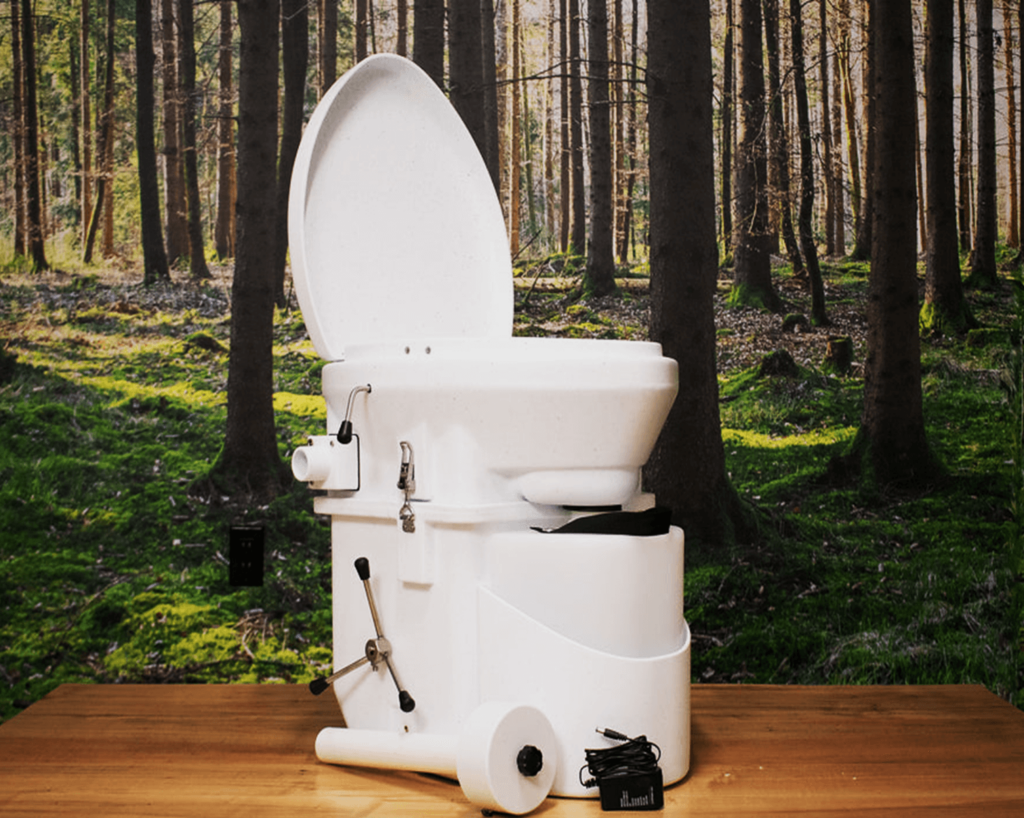
Several types of Self Contained Composting Toilets are available, each with unique features and benefits.
1. Separation type
This is the most common type of toilet. This type of toilet separates solid and liquid waste for composting and utilizes aerobic bacteria to break down the material. The solid waste is stored in a container, and the liquid waste is collected in a separate tank. This type of toilet is relatively easy to install and maintain, and it can be used in both off-grid and on-grid applications.
2. Ventilated Improved Pit
The “ventilated improved pit” (VIP) type of Self Contained Composting Toilet is another popular option. This type of toilet has a ventilation system that circulates air through the composting chamber and helps to promote aerobic decomposition. This type of toilet requires a connection to an external venting system, which must be installed by a professional. Although the installation process is more complex, the VIP toilet is generally more efficient than the separation-type system.
3. Urine-Diverting
This toilet collects urine in a separate container, allowing it to be safely and efficiently removed for disposal or reuse. This type of toilet is often preferred by users who want to reduce the amount of water used for flushing and save on wastewater treatment costs.
4. Container-based
Finally, the “container-based” type of Self Contained Composting Toilet is an increasingly popular option. This type of toilet uses a container to store all waste material, including solid and liquid waste. This type of toilet is relatively easy to install and maintain, and it does not require any external ventilation system.
How much do Self-contained Composting Toilets cost?
Composting toilets are an economical and environmentally friendly alternative to traditional flush toilets. For those looking to invest in a self-contained composting toilet, the cost will vary depending on the type of system they choose. The most basic self-contained composting toilet systems start at around $500, while more elaborate systems can cost up to $2,000 or more.
How to get maximum efficiency from a self-contained Compositing Toilet?
When installing a self-contained composting toilet, it is essential to ensure the unit is placed in an area away from direct sunlight and wind. This helps to ensure that the unit remains at an optimal temperature for composting. Additionally, it is vital to ensure that the unit is installed on a level surface and that there is sufficient space around the unit for air circulation.
Ensuring that the unit is kept clean and the compost is stirred regularly is crucial for maximum efficiency. This helps to ensure that the compost does not become compacted, which can impede the composting process.
The unit should also be inspected regularly for signs of damage or wear and tear. The unit should be serviced or replaced if any issues arise to maintain optimal performance. It is also essential to ensure that the unit is emptied when necessary and that the compost is used safely and responsibly.
By following these simple steps, it is possible to achieve maximum efficiency from a self-contained composting toilet. Proper installation, maintenance, and regular inspection are essential for keeping the unit performing optimally. With the proper care and maintenance, a self-contained composting toilet can provide an eco-friendly and cost-effective solution for areas with limited water resources.
Buying Guide to best Self-Contained Composting Toilet:
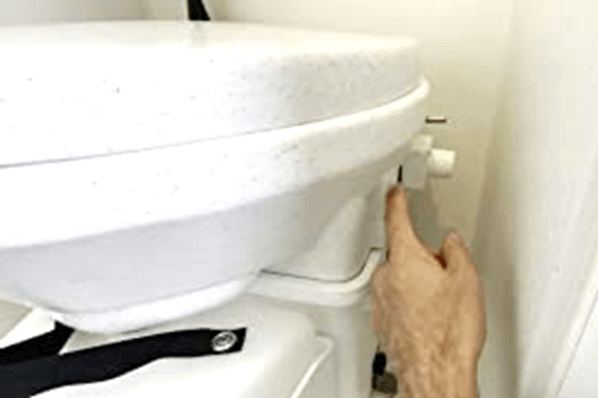
When buying a self-contained composting toilet, it is essential to consider a few key factors.
1. Size
First, you should consider the size of the unit. This is important because a larger unit will provide a greater capacity and require less frequent emptying. It is also important to consider the size of the area where the unit will be installed. You’ll want to make sure the toilet will fit in the space available.
2. Composting system
Second, you should consider the type of composting system the unit uses. There are two main types of composting toilets: aerobic and anaerobic. Aerobic systems use oxygen to decompose the waste, while anaerobic systems use bacteria to break down the material. Depending on your needs, you should determine which type of system is most suitable for you.
3. Cost
Third, you should consider the cost of the unit. Self-contained composting toilets can be expensive, so you’ll want to ensure you’re getting a unit worth the money. Consider the unit’s features and how much you can afford to spend.
4. Warranty and Customer service
Finally, you should consider the warranty and customer service offered by the manufacturer. It is always essential to ensure you are investing in a product backed by a reputable company that offers a good warranty. Taking the time to research and read customer reviews can help you make an informed decision.
The Best and Winning Self Composting Toilet is:
Nature’s Head® Self-Contained Composting Toilet with Foot-Spider Handle:
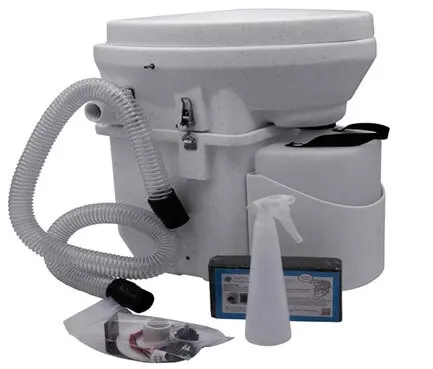
It is an excellent option for anyone looking for a reliable and efficient composting toilet. Why? Because this toilet is designed to be easy to use, with a foot-spider handle that allows for easy and efficient emptying of the waste tank. The toilet measures 19.02 “L x 19.02” W and weighs 29.4 pounds, making it a lightweight yet sturdy choice that can be easily moved if necessary.
This toilet features a large capacity waste tank, allowing more frequent emptying than most other composting toilets on the market. Moreover, this is a reliable and efficient composting toilet. With its human-friendly design and lush white or granite color, this toilet is sure to provide a good-looking, reliable, and efficient solution to anyone looking for a composting toilet.
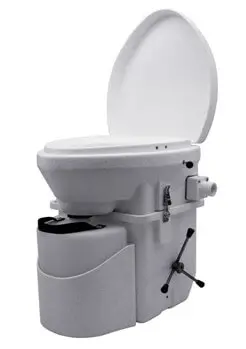
Features:
Brand: Nature head
Dimensions: 19.02″L x 20.98″W
Weight: 29.4 pounds
Shape: Foot-spider
Pros:
1. Easy to use with a foot-spider handle
2. Lightweight yet sturdy design
3. Large capacity waste tank
4. Reliable and efficient.’
Cons:
1. Limited size options
In conclusion, nature’s head toilet is the perfect option available on the market because it fulfills all the requirements needed in a self-contained composting toilet. I have tested and done the hard work for you to search the market and costumer opinions to find the best product available now.
FAQs:
What is a self-contained composting toilet?
A self-contained composting toilet is a toilet system that does not require a connection to the main wastewater system or septic tank. Instead, it uses anaerobic composting to break down biological waste into fertilizer-rich compost.
How do self-contained composting toilets work?
Self-contained composting toilets work by using a small chamber, usually made of plastic or ceramic, to contain waste. Waste enters the chamber, where it is then broken down by bacteria and other microorganisms, producing a nutrient-rich compost. The compost can then be used as fertilizer in gardens, or it can be disposed of in an environmentally friendly manner.
What are the advantages of self-contained composting toilets?
The main advantage of self-contained composting toilets is their sustainability. Since the waste is broken down in anaerobic composting, there is no need for a connection to the main wastewater system, which reduces water usage and carbon emissions. In addition, the compost produced from these toilets is a nutrient-rich fertilizer that can improve soil quality and promote plant health.
What are the disadvantages of self-contained composting toilets?
The main disadvantage of self-contained composting toilets is their cost. These toilet systems can be expensive and require regular maintenance to ensure they are working efficiently. In addition, the compost produced by these toilets must be disposed of in an environmentally friendly manner, which can also be costly.
Is a self-contained composting toilet easy to install and maintain?
Installing a self-contained composting toilet is usually relatively straightforward and can be done without the help of a professional. Once the toilet is installed, maintenance is minimal and mostly consists of refilling the material in the composting chamber and emptying the solid waste bin when necessary.
Additional Resources
If you are looking for more tutorials, walkthroughs and troubleshooting about camping and enjoying the outdoors, here are some additional posts to check out:
Conclusion:
In conclusion, self-contained composting toilets offer a variety of benefits, from water savings to odor-free operation. They are perfect for off-grid applications and can easily be installed in homes with limited space.
With their affordable cost, efficient operation, and environmental friendliness, self-contained composting toilets are an excellent choice for anyone looking for an eco-friendly alternative to traditional flush toilets.
By taking the time to consider the unit’s size, type, cost, and warranty, you can ensure that you’re buying the best self-contained composting toilet for your needs.
Several types of Self Contained Composting Toilets are available, each with its unique features and benefits.
Depending on the user’s specific needs, one of these toilets will be the best option for your outdoor activities. It is important to research the different types of toilets and select the one for your needs.
In this article, I have provided the best option available on the market, i.e., The Nature’s Head® Self-Contained Composting Toilet with Foot-Spider, so that you do not have to search the market by yourself. Thanks for reading! If you think I forgot something or if you simply want to share a story or some advice, please feel free to leave your comment below! Nut for now, Be safe and have fun!

